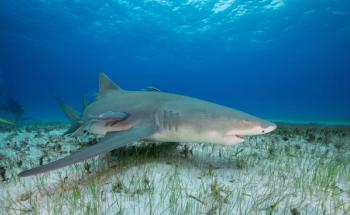
AAVMC meeting addresses changing dynamics of food animal production
Increasing global need for protein sources discussed at conference, along with how educational specialization could better serve future rural veterinarians.
WASHINGTON, D.C. — Animal agriculture is changing rapidly. In fact, it was key issue explored at the recent 2012 Association of American Veterinary Medical Colleges (AAVMC) meeting, where veterinarians, veterinary medical educators and representatives of the food-animal production industry discussed the rapidly changing nature of animal agriculture and how veterinary medical education and veterinary practice can respond.
Experts described a strong global demand for food combined with rapid consolidation of livestock and poultry industries, as well as the regionalization of the swine, poultry and dairy industries, the AAVMC says. In the United States, the swine industry is primarily located in the upper Midwest and North Carolina, while the poultry industry is primarily located in southeastern part of the country. In contrast, the dairy industry is migrating west, focusing in the upper Midwest, California, Oklahoma, eastern New Mexico and the Texas panhandle.
In each of the agricultural commodity segments, the number of farms is decreasing "but the size of operations is increasing, reducing the number of veterinarians required to serve on a day-to-day basis," the AAVMC says. Instead, these industries are hiring veterinarians as consultants for specialized services related to education and management to minimize diseases, address food safety and animal-welfare concerns, and become more involved in managing the impact of these operations on the environment.
"Rural practitioners will need to respond to this changing dynamic by offering a diversity of services, including those that address the health of all species as well as the community's public health and environmental management needs," says Bennie Osburn, PhD, DACVP, interim executive director of the AAVMC.
Worldwide, experts predict that demand for agriculture and animal protein will expand for U.S.-produced food, increasing the need for veterinary medical supervision and expertise. For example, China is about equal to or slightly smaller in area than the United States, but 70 percent of China's land mass is mountains, plateaus and hills, much of which is not conducive for agriculture or livestock. With 1.34 billion people versus 313 million in the United States, China is expected to experience a huge demand for food.
Dr. Rick Sibbel, director of technical services for U.S. cattle for Merck Animal Health, says veterinarians of tomorrow will need business and communication skills as well as medical skills. His observation aligns with the recommendations outlined in "The Roadmap for Veterinary Medical Education in the 21st Century: Responsive, Collaborative, Flexible," a report produced by the AAVMC as part of the North American Veterinary Medical Education Consortium (NAVMEC), which calls for an emphasis on the competencies required for practice, the AAVMC reports. For rural practitioners, those competencies would include communication skills, personnel management, education of farm workers, business skills and leadership.
The report also addressed the importance of reducing educational costs and student debt, as well as the recommended development of Centers of Excellence, which could be consolidated in areas of industry specialization and focus. "The creation of Centers of Excellence would reduce the costs of specialized education for individual colleges and take advantage of the economies of scale available in areas where a concentration of livestock and specialized expertise exists," the AAVMC says.
Conference attendees emphasized the need for loan repayment programs to assist those new graduates in repaying their student loans as they build practices in rural communities.
"The information from these sessions, which brought the veterinary industry and education together, will form the basis for reviewing and planning for more collaboration of colleges to address the changing educational needs of America's diverse agricultural systems," Osburn adds.
Newsletter
From exam room tips to practice management insights, get trusted veterinary news delivered straight to your inbox—subscribe to dvm360.






